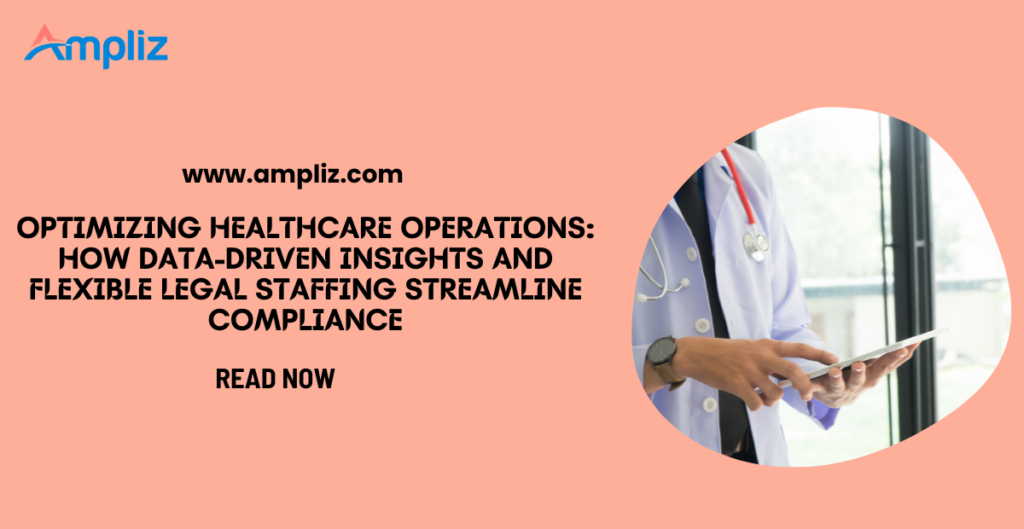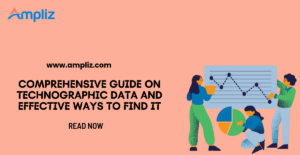Due to today’s technology, we can use tools like data analytics and automation to streamline processes and optimize healthcare operations. Since information moves freely in an interconnected system, healthcare workers can get easy access to the data they need.
Additionally, we have the field of telemedicine, which has registered a boom in the last couple of years (during and post-pandemic), and AI-powered models that can predict future demands or issues before they arise. These technologies enhance efficiency and improve patient care every day!
However, a system as complex as healthcare needs more than advanced technology to streamline operations. We must also consider compliance with rules, regulations, and data privacy laws, especially now when most hospitals and clinics store patient data digitally.
In this article, we’ll dive deep into how we can enhance healthcare operations and ensure regulatory compliance across all levels of service delivery. So, if you want to learn more, stay tuned until the end!
What Does it Mean to be Compliant in Healthcare?
Compliance involves adhering to laws, regulations, and guidelines that govern the industry, and for healthcare, there are lots to keep in mind. There is a complex set of rules ensuring patient safety, data privacy, and ethical practices.
Here’s a breakdown of some of the most well-known and important standards in healthcare:
- Patient Privacy: Compliance with these rules ensures patients’ personal information is secure and confidential through regulations like HIPAA.
- Safety Standards: Facilities follow strict protocols for equipment use, sanitation, and emergency procedures to keep everyone safe.
- Billing Practices: Accurate coding and billing prevent fraud while ensuring patients aren’t overcharged or undercharged.
- Clinical Protocols: Following evidence-based practices guarantees effective treatment while minimizing risks.
- Ethical Conduct: Upholding professional ethics fosters trust between providers and patients alike.
In addition to ensuring patient safety, organization must give special attention to legal concern like ethical conduct and compliance with regulations. Situations can arise when a patient alleges they didn’t fully understand the complexities of their medical procedure, leading to lack of informed consent cases. Ensuring such instances are openly managed helps build trust between patients and healthcare providers while minimizing potential legal disputes.
How Does Data Analytics Fit In?
Each day, hospitals and clinics all over the world process an ungodly amount of data. From patient records (every visit generates electronic health records) to imaging data (MRIs or X-rays), lab results, administrative data, and research – everything is recorded and stored digitally, creating some sort of data fusion.
This means that healthcare organizations can easily handle terabytes of data each day. So, who can dig through these mountains of data and extract meaningful insights, understand trends, or make predictions?
Here is where data analytics comes in and saves the day. Here are a few situations where, without data analytics, things would get arduous really fast:
- Trend Identification: Data analytics allows healthcare organizations to discern patterns and trends within vast datasets, such as patient demographics or treatment outcomes. This foresight enables facilities to allocate resources efficiently, ensuring readiness for future demands.
- Compliance Monitoring: Real-time data analysis offers robust monitoring capabilities that ensure continuous adherence to safety protocols, billing accuracy, and privacy regulations. By tracking these elements closely, organizations can maintain compliance with regulatory frameworks like HIPAA without disruption.
- Risk Management Enhancement: Through predictive modeling, data analytics identifies potential risks early on. This proactive approach permits institutions to address vulnerabilities before they escalate into significant issues that could jeopardize patient safety or operational efficiency.
- Performance Metrics Evaluation: With clear insights into performance metrics provided by data-driven analysis, facilities are better equipped to measure their operations against established compliance benchmarks. This visibility highlights areas requiring improvement promptly and effectively.
- Audit Preparedness: This is vastly improved through comprehensive reports generated from analyzed data – making the audit process smoother by delivering transparent insights into operational practices at any time.
Do We Still Need Human Administrative Staff?
Since there’s so much that today’s technology can do, is there still a need for human staff? Definitely yes!
It can be tempting to believe that modern technology can take over all the administrative and legal processes, but this couldn’t be further from the truth. Human staff are indispensable in healthcare (and any other industry, for that matter).
Firstly, decision-making benefits from human judgment. While analytics provide valuable insights, humans add context and understanding that algorithms lack, particularly in complex situations requiring empathy and experience.
Secondly, interpersonal skills are vital. Administrative staff manage patient interactions with compassion and effective communication, ensuring patients feel valued – a role machines can’t fulfill.
Additionally, adaptability to change is key. Due to their dynamic nature, healthcare environments require swift responses to new processes or policies. Human staff adjusts more flexibly than automated systems during unexpected events.
Finally, overseeing data quality remains essential as humans verify the accuracy of information used by analytical tools, preventing errors that could skew outcomes or compromise patient care.
The Role of Legal Staff
Sure, we have tools that monitor an organization’s activity and can identify compliance errors or platforms that ensure coding is accurate, but legal issues, especially ones pertaining to compliance, are a lot more complex than that.
Legal professionals ensure adherence to comprehensive standards such as HIPAA and other state-specific mandates, safeguarding the institution’s operations. They can also interpret changes in law and guide healthcare providers in integrating new requirements into their existing practices.
Also, let’s not forget that legal staff manage conflicts involving patients, insurers, or regulatory bodies – protecting the organization’s interests through effective resolution strategies.
Furthermore, you can reap all these benefits and more without having a team of lawyers on retainer. If you’re a small organization, a reliable secondee lawyer should be enough to cover all your legal compliance needs.
Optimized Healthcare Operations for Better Patient Care
Most technology in hospitals today supports administrative and legal staff, focusing on the optimization of operations.
We have automation, which simplifies routine tasks like scheduling and billing, document management systems that streamline the storage and retrieval of crucial information for compliance checks or audits, or regulatory compliance software tools. You can even use AI tools to boost marketing strategies and campaigns.
So, what about the patient? What do they get out of this?
Quite a lot, it seems.
For instance, streamlined processes ensure that resources are available where they’re most needed, reducing wait times and enhancing overall service delivery. Due to this, patients experience quicker diagnoses, treatments, and follow-ups.
With optimization, healthcare providers focus more on direct patient interaction rather than administrative tasks. This attention leads to personalized care plans tailored to individual needs.
Additionally, fewer data input and processing errors mean decreased chances of mistakes in areas such as medication administration or record-keeping, which directly and positively impact patient safety.
Also, just because there are more tools for the administrative and legal stuff, this doesn’t mean there are no high-tech tools and gadgets for patient care. Telemedicine platforms, for instance, benefit both parties. These systems enable remote consultations, allowing patients to connect with healthcare providers from the comfort of their homes.
Also, wearable devices are increasingly popular as they continuously monitor vital signs such as heart rate or blood pressure, delivering real-time health metrics directly into medical databases.
There’s also robotic surgery, which enhances precision during procedures by providing surgeons with greater control and reducing recovery times through minimally invasive techniques.
Wrap Up
The future of healthcare is unfolding with technology at the forefront. By leveraging data analytics and embracing flexible legal staffing, organizations enhance both compliance and patient outcomes.
This approach ensures they remain agile amidst regulatory changes while delivering top-notch care. As these advancements continue to integrate into daily operations, healthcare facilities are set to achieve unprecedented levels of efficiency and quality in patient services.


